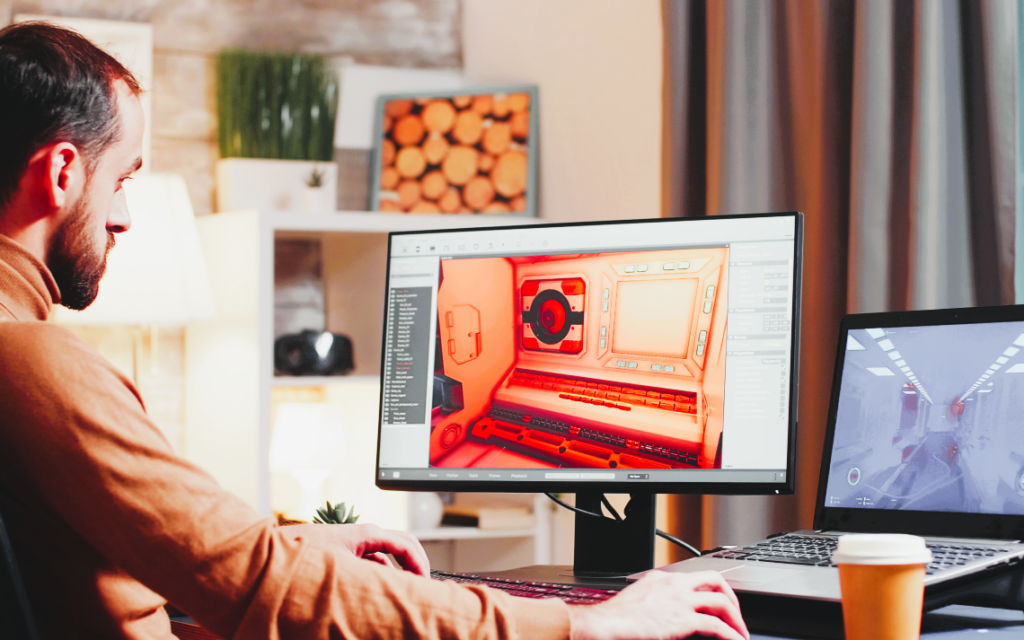In the world of video game design, creating interactive menus and in-game interfaces is a critical aspect that significantly impacts the overall user experience. Whether designing for consoles, PCs, or mobile devices, each platform presents unique challenges and opportunities for developers. This article explores best practices for designing interactive menus and in-game interfaces across various platforms, aiming to enhance usability and engagement for players.
Understanding Platform-Specific Requirements
Each gaming platform—be it a console, PC, or mobile device—has its own set of guidelines and user expectations. Understanding these platform-specific requirements is essential for creating interfaces that feel intuitive and responsive.
- Consoles (e.g., PlayStation, Xbox):
- Controller Input: Consoles primarily use game controllers, so menu navigation must be optimized for directional buttons and analog sticks. This means designing large, easily selectable buttons and ensuring that menu options are clearly delineated.
- Screen Resolution and Aspect Ratio: Consoles often connect to high-definition TVs with various aspect ratios. Designers must account for different screen sizes and resolutions to ensure that menus and interfaces are scalable and visually consistent.
- Interface Feedback: Consoles benefit from visual and auditory feedback. This includes using animations, sound effects, and haptic feedback (where available) to enhance the user experience.
- PCs:
- Keyboard and Mouse Input: PCs offer precise control through keyboards and mice. Menus should be designed with clickable elements that are easy to interact with using a mouse, and keyboard shortcuts can enhance efficiency for advanced users.
- High Customizability: PCs often allow for greater customization of controls and settings. Interfaces should accommodate a range of options for users to personalize their experience.
- Multiple Monitors and Resolutions: PC users may have varying screen setups, including multiple monitors. Designing responsive interfaces that adjust to different screen sizes and resolutions is crucial.
- Mobile Devices (e.g., Smartphones, Tablets):
- Touchscreen Interaction: Mobile devices rely on touch input, which necessitates larger touch targets and gesture-based navigation. Menus should be designed for easy touch interactions and swipes.
- Portrait and Landscape Modes: Mobile devices can be used in both portrait and landscape orientations. Designing flexible interfaces that adapt to these modes ensures a consistent experience.
- Battery and Performance: Mobile devices have limited resources compared to consoles and PCs. Designing lightweight interfaces that minimize battery drain and optimize performance is essential.
Best Practices for Interactive Menus and In-Game Interfaces

Regardless of the platform, certain principles apply universally when designing interactive menus and in-game interfaces:
- Clarity and Simplicity:
- Ensure that menu options and in-game elements are clearly labeled and easily distinguishable. Avoid cluttering the screen with excessive information or complex navigation paths.
- Use intuitive icons and consistent terminology to help players quickly understand the purpose of each interface element.
- Consistency:
- Maintain a consistent visual style and navigation scheme throughout the game. This helps players become familiar with the interface and reduces the learning curve.
- Ensure that interactive elements such as buttons, sliders, and menus behave consistently across different sections of the game. The best tools and technologies for game user interface development in 2024, read more at this link.
- Feedback and Responsiveness:
- Provide immediate visual or auditory feedback when players interact with interface elements. This helps confirm that their actions have been recognized and processed.
- Design interfaces to be responsive and quick to load, avoiding any delays or lag that could disrupt the user experience.
- Accessibility:
- Consider accessibility features to accommodate players with disabilities. This includes options for colorblind modes, text-to-speech functionality, and customizable controls.
- Implement scalable text and UI elements to ensure readability across different screen sizes and resolutions.
- User Testing:
- Conduct extensive user testing to gather feedback on the interface design. This helps identify any issues or areas for improvement before the final release.
- Test the interface on different platforms to ensure that it performs well and meets the expectations of players across various devices.
Case Studies and Examples
- Console Games:
- Example: In “The Legend of Zelda: Breath of the Wild” for the Nintendo Switch, the menu system is designed to be easily navigable using the console’s controller. Large icons and a straightforward layout ensure that players can quickly access their inventory, map, and settings.
- PC Games:
- Example: “World of Warcraft” offers a highly customizable interface that allows players to adjust their HUD, keybindings, and addon settings. The game’s menus are designed for mouse and keyboard interactions, providing precise control over gameplay and settings.
- Mobile Games:
- Example: “Candy Crush Saga” features a touch-friendly interface with large buttons and swipe gestures. The game’s menus adapt seamlessly between portrait and landscape orientations, ensuring a smooth experience on various mobile devices.
Designing interactive menus and in-game interfaces requires careful consideration of platform-specific requirements and universal design principles. By understanding the unique needs of each platform and adhering to best practices, developers can create engaging and user-friendly interfaces that enhance the overall gaming experience. Whether designing for consoles, PCs, or mobile devices, the goal remains the same: to provide players with intuitive and enjoyable interactions that complement the gameplay.
For further reading on standards and guidelines for interactive design, you can explore resources like Wikipedia’s Design Standards.




